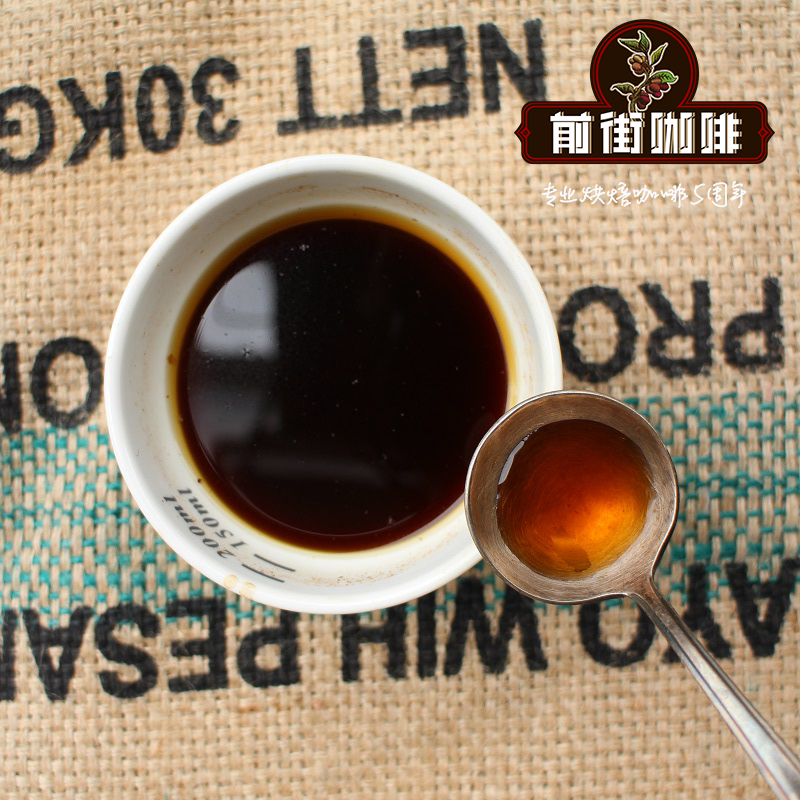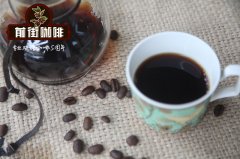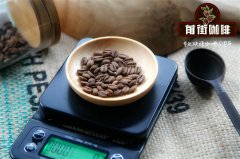Characteristics of honey treatment of coffee. How much is the coffee bean treated with honey? what is the taste of the coffee treated with honey?

Professional coffee knowledge exchange more coffee bean information please follow the coffee workshop (Wechat official account cafe_style)
We can often see such nouns as washing, tanning, honey treatment and so on. What kind of influence do these different methods of coffee bean treatment have on the flavor of coffee? Today, the editor is here to take you to find out.
What is a coffee cherry?
In order to carry on the family line, the coffee tree will grow coffee fruit, which is bright red and is also called "coffee cherry" because it looks like a cherry.
The coffee beans we use when making coffee are actually the seeds inside the coffee fruit. In the outer layer of the seed, there are exocarp, pulp, pectin, endocarp and silver peel and other structures, and the purpose of processing is to remove these external structures in order to obtain internal coffee seeds.
Solarization method
Tanning is the oldest method of treatment. according to literature, Arabs began to use tanning to treat coffee fruits as early as 1000 years ago in the 11th century. Coffee was called "Arab wine" when it was introduced into the West from the Arab world because of its refreshing effect.
Treatment process
1. Remove floating beans
Pour the coffee beans into a large tank, the underdeveloped inferior beans will surface, and the ripe and full fruits will sink to the bottom of the water. At this time, the floating beans on the surface will be removed, that is, the steps of removing floating beans will be completed.
two。 Insolation
Spread the coffee fruit evenly in the exposure field and turn it several times a day. This process usually lasts about 2-3 weeks, depending on the local climate, when the water content inside the coffee beans drops to 10-14%, the sun drying step is completed.
3. Remove the shell
After the end of the sun, the outer layer of the coffee seed has been dry and hard, at this time, the shell is removed by the sheller, that is, the treatment step of the sun method is completed.
Advantages:
Except for the step of removing floating beans (which is even omitted in some areas), sunbathing requires no water, and a bucket of water can be reused at low cost, so it is widely used in areas where water resources are not abundant and less affluent.
Disadvantages:
1. Due to the need to keep coffee beans outdoors for a long time, there are often many impurities such as withered branches and leaves.
two。 Because it is the use of the sun's energy, the degree of dryness of coffee beans is not easy to control, resulting in coffee fruit "overdrying" situation, internal coffee beans are damaged as a result.
3. In the process of the sun, because the pulp has not been removed, it is often moldy and rotten.
Flavor:
Because the sun drying method is to let the coffee fruit dry naturally, the coffee beans can ripen naturally inside the fruit and will not be disturbed by the external environment, so the coffee beans treated by the sun method will enlarge their own flavor, mellow and strong flavor. and give off a sweet taste.
Washing method
Due to too many shortcomings of the sun method, the water washing method was invented. Water washing is the most widely used treatment method at present, and the biggest difference from the sun method is the use of fermentation to remove the pectin layer.
Treatment process
1. Remove floating beans (same sun method)
Pour the coffee beans into a large tank, the underdeveloped inferior beans will surface, and the ripe and full fruits will sink to the bottom of the water. At this time, the floating beans on the surface will be removed, that is, the steps of removing floating beans will be completed.
two。 Remove the peel and pulp
Through the pulp screening machine (pulping machine), the exocarp and pulp of coffee fruit are removed. It leaves pectin, endocarp and silver peel.
3. Ferment
The purpose of this step is to use biological treatment to remove pectin. Put the coffee fruit treated by the pulp screening machine into the fermentation tank for 16 hours and 36 hours, the fermentation bacteria will dissolve the pectin.
4. Water washing
After completing the fermentation and removing the pectin, the coffee beans will be cleaned again because the fermentation bacteria and impurities will remain on the coffee beans. In order to clean it, this step consumes a lot of water.
5. Drying and removing endocarp and silver peel
The coffee fruit is usually dried by machine (or sun-drying) so that the moisture content is reduced to 1014%. Then use the sheller to remove the remaining endocarp and silver peel, that is, to complete the processing.
Advantages:
1. All the treatment procedures of the water washing method are indoor, so the impurities in the coffee beans can be reduced to the lowest and the quality is the highest.
two。 Since the flesh is removed in the first place, there is no need to worry about mildew like the sun method.
3. The appearance is relatively complete, and the selling image is excellent.
Disadvantages:
1. The procedure is complex and tedious, so the cost is much higher than that of tanning.
two。 A large amount of water will be used, and it takes 40 to 50 liters of water to obtain 1 kilogram of coffee beans, so it is less used in areas where water resources are scarce.
Flavor:
As a result of fermentation, coffee beans usually have a bright sour and fruity flavor.
Honey-treated coffee beans
Honey treatment is an improved method of solarization. The main difference between honey treatment and solarization is that the exocarp and pulp are removed before sun exposure, and the skin and pulp are directly exposed to the sun under the retained pectin layer.
Processing steps
1. Remove floating beans (as with solarization, this step may be reduced in some areas)
Pour the coffee beans into a large tank, the underdeveloped inferior beans will surface, and the ripe and full fruits will sink to the bottom of the water. At this time, the floating beans on the surface will be removed, that is, the steps of removing floating beans will be completed.
two。 Remove the peel and pulp (same as washing):
Through the pulp screening machine (pulping machine), the exocarp and pulp of coffee fruit are removed. It leaves pectin, endocarp and silver peel.
3. The sun:
The coffee beans with pectin are directly exposed in the exposure field, so that the water content is reduced to 10-14%.
4. Remove pectin and endocarp
With a special machine, remove pectin and endocarp, that is, complete the treatment steps.
Advantages:
1. It belongs to the improved method of tanning, because the pulp is removed from the beginning, so there is no mildew problem.
two。 It does not need to consume a lot of water, and the cost is low.
Disadvantages:
The processing steps can be said to be the most complex and labor-intensive of all ways.
Flavor:
Honey-treated coffee beans have a better flavor, sour taste and sweet taste balance, and the same sun method because of the sun, the aroma of coffee beans will also be magnified, mellow flavor.
Other methods
In addition to using the above refining methods, there is also the use of enzymes and digestive juices in the biological digestive tract for the treatment of raw coffee beans (to put it simply, to pull the coffee beans out. ).
At present, creatures that are known to be able to be used in this treatment are civets (Kopi Luwak) and elephants (such as shit coffee). Macaques, meat-clad Phoenix-crowned gizzards and even buffaloes are also used in other areas for coffee processing, but the yield is not high and is still rare.
Last
In fact, in this link of raw bean processing, there are a variety of treatment methods, the substance is all around the [fermentation] change collocation.
In the process of [fermentation], different substances are involved (coffee peel, coffee pulp, coffee pectin, bacteria species, bacteria distribution), different environments (water and water, oxygen and oxygen, PH environment, etc.), different drying methods and processes (container material, natural sun, drying equipment, turning times, etc.), resulting in different post-processing flavors and tastes. Only by understanding the actual process and development degree of fermentation, can we imagine the flavor trend of raw beans.
Brand recommendation of honey treated coffee beans
The Costa Rican black honey-treated coffee beans roasted on Qianjie Coffee are fully guaranteed both in brand and quality. And more importantly, the performance-to-price ratio is extremely high, a pack of half a pound 227 grams, the price is only about 95 yuan. According to the calculation of 15 powders per cup of coffee, 15 cups of coffee can be made in a bag, which costs only about 6 yuan per cup, which is very cost-effective for coffee shops to sell dozens of yuan a cup.
Qianjie coffee: Guangzhou bakery, the store is small but a variety of beans, you can find a variety of unknown beans, but also provide online store services. Https://shop104210103.taobao.com
Important Notice :
前街咖啡 FrontStreet Coffee has moved to new addredd:
FrontStreet Coffee Address: 315,Donghua East Road,GuangZhou
Tel:020 38364473
- Prev

What is the coffee bean treated with mantrin honey? West Java honey treated ≠ manning honey treated coffee price
Professional coffee knowledge exchange more coffee bean information please follow the coffee workshop (Wechat official account cafe_style) Indonesia West Java honey processing coffee beans West Java province, is the first-level administrative region of Indonesia. Located in the western part of Java, facing the Java Sea to the north and the Indian Ocean to the south, including offshore islands, covering an area of 46300 square kilometers, Java has a tropical rainy forest climate.
- Next

Flavor characteristics of honey treated coffee beans_Coffee beans honey treatment method classification_Honey treated coffee beans price
Professional coffee knowledge exchange More coffee bean information Please pay attention to coffee workshop (Weixin Official Accounts cafe_style) As mentioned earlier, honey treatment method is a treatment method between sun treatment method and washing method. It keeps the coffee clean from washing, and because it is sun-dried along with the pulp mucosa, it greatly increases the sweetness and caramel flavor of the coffee.
Related
- What is the meaning of lactic acid fermentation with coffee bean treatment?
- How to judge the state of foam by sound?
- How does the latte pull out the unicorn pattern? Come to get for a little trick to improve the flower pull!
- Will flower pulling affect the taste of the latte?
- Do you know the history of coffee?
- The difference between honey treatment and sun washing what is raisin honey treatment?
- What kind of milk can a novice use to make coffee foam to keep the foam longer? The correct method and skills of milking tutorial sharing
- Why do washed coffee beans taste sour? Flavor characteristics of washed Coffee
- Introduction to the skill of how to practice the size and height of water injection around the circle of hand-brewed coffee
- How do beginners practice coffee flower drawing from scratch?

